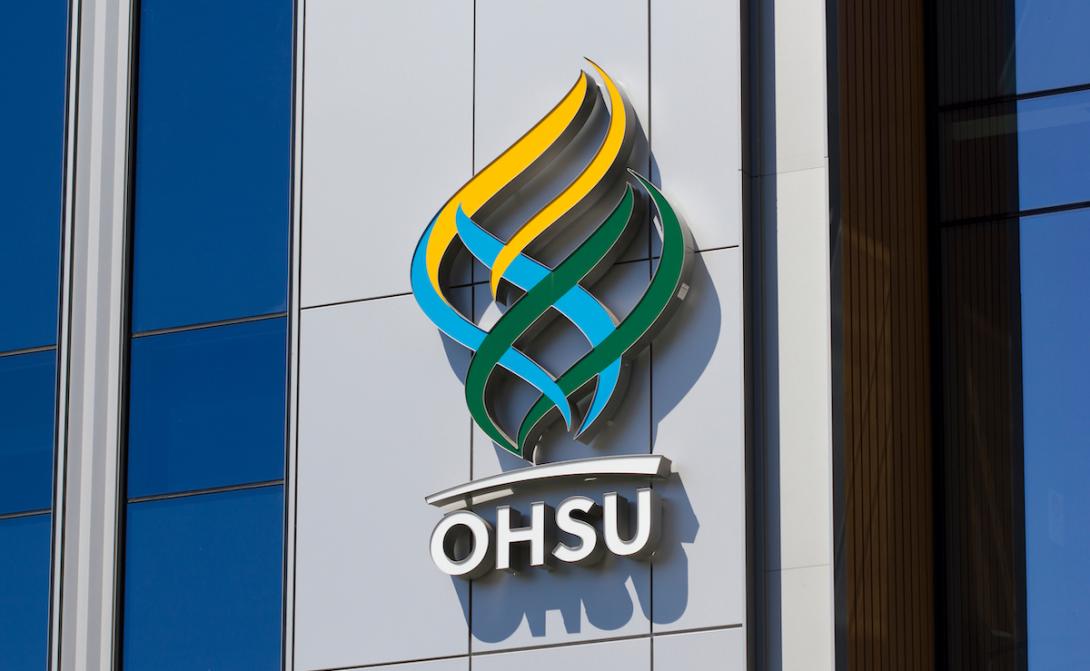
Oregon’s largest medical school has increased its enrollment of Native students, making gains where other similar institutions have struggled as they’ve sought to diversify their pools of prospective doctors.
Using terms adopted by the U.S. Census, data released in December from the Association of American Medical Colleges showed students self-identifying as “American Indian” or “Native Alaskan” account for nearly 5%, or 31, of the 650 total medical students enrolled in Oregon Health & Science University's M.D. program for the 2022-2023 school year.
The association’s data shows medical schools nationally have successfully increased their recruitment of Black and Latino students in recent years but have fallen behind with Native Americans.
“I think our school looks pretty good,” Dr. Robert Cloutier, an assistant dean overseeing admissions for OHSU’s M.D. program, told The Lund Report. “And I’m glad that we’re making inroads with the (American Indian and Alaska Native) group because that’s a population right now that I think requires a lot of attention in terms of recruitment to medical school.”
Franny White, university spokeswoman, said in email the new data shows OHSU’s M.D. program now has the fifth-largest number of enrolled American Indian or Alaska Native students for all U.S. M.D.-granting institutions.
Fewer than 1%, or 6, of OHSU’s medical student population in 2018 were Native, according to the association data provided to The Lund Report.
Cloutier said qualified Native applicants might be dissuaded from applying to medical school by the expense and the time commitment that goes into filling out applications. Others might give up after having difficulty with the application and not having a mentor to help see it through, he said.
Cloutier said he’s worked closely with Dr. Erik Brodt, OHSU’s assistant dean of Native American Health, and other Native faculty members to optimize the recruitment and application process. He also said OHSU’s Northwest Native American Center of Excellence attracts candidates from Indigenous communities.
The center offers its Wy’east Post-Baccalaureate Pathway, a 10-month pre-med program that gives prospective Native applicants conditional or guaranteed acceptance to medical schools at OHSU, Washington State University and UC Davis after completing the program. Cloutier said it’s open to 39 tribes nationwide that have ties to the state of Oregon.
Research shows that patients have better outcomes and are more likely to trust health providers if physicians share their racial backgrounds. There’s been a push nationally to bring in underrepresented groups into medical professions, and an Oregon Medical Association task force released a statement in June 2021 calling for a more racially diverse health care workforce across the state.
But a report released by the Oregon Health Authority in March 2021 found that the state’s health care workforce remained overwhelmingly and disproportionately white.
In response to efforts to diversify the health care workforce, the number of Black students enrolling in medical school nationally increased to 10% for the 2022-2023 school year, up from the 9.5% in 2020-2021, according to the association’s data. For Latino and Hispanic students, that number of medical students increased slightly to 12% during that time period.
But the data also found the number of American Indian or Alaska Native enrollees declined by 9% between the 2020-2021 and 2022-2023 school years. This group now accounts for 1% of new medical students at the 155 schools covered in the data, which doesn’t include the College of Osteopathic Medicine of the Pacific in Lebanon, Oregon.
Previously, OHSU has faced criticism for a lack of inclusivity. A class-action lawsuit was filed against OHSU last year alleging management disproportionately disciplined Black and other employees of color. The lawsuit followed an independent investigation that found OHSU wasn’t upholding its values of diversity, equity and inclusion.
Leslie Garcia, associate dean for OHSU School of Medicine Diversity, Equity and Inclusion, said that for generations racial minorities have been excluded from entering medical professions.
“How can you become one, if for generations you have not seen role models?” she said.
Garcia said OHSU has outreach initiatives that seek to reach potential students from underrepresented groups early in high schools and community colleges.
OHSU’s School of Medicine has also seen increased enrollments of underrepresented groups compared to five years ago, according to data from the Association of American Medical Colleges provided to The Lund Report.
Association numbers from 2018 show OHSU’s School of Medicine enrolled 13 Black or African American students, nearly 2% of its then 652 total students. The same year, the school also enrolled 41 Latino students, or 6% of total students enrolled. A total of five students were Native Hawaiian or Pacific Islander. Three-quarters of students were white and about 20% Asian.
The most recent numbers from the Association of American Medical Colleges show that 445, or 68% of enrollees at OHSU’s Medical School are white and 154, about a quarter, are Asian. Another 27, or 4%, are Black and 57, or 9%, are Latino. Just six medical students are Native Hawaiian or Pacific Islander.
Garcia pointed out that OHSU’s School of Medicine currently has a higher proportion of Black medical students than Oregon’s roughly 2% Black population. But OHSU School of Medicine’s proportion of Latino medical students is lower than the state’s 14% Latino population. OHSU’s small number of Native Hawaiian and Pacific Islander is roughly in line with the state’s small population of the group.
The current 5% of students at OHSU’s School of Medicine self-identifying as American Indian or Native Alaskan is higher than the nearly 2% of Oregonians in the demographic group.
But Garcia said OHSU doesn’t have specific enrollment targets and takes a “holistic approach” to admissions aimed at improving access to underserved areas, including rural communities.
You can reach Jake at [email protected] or via Twitter @jakethomas2009.